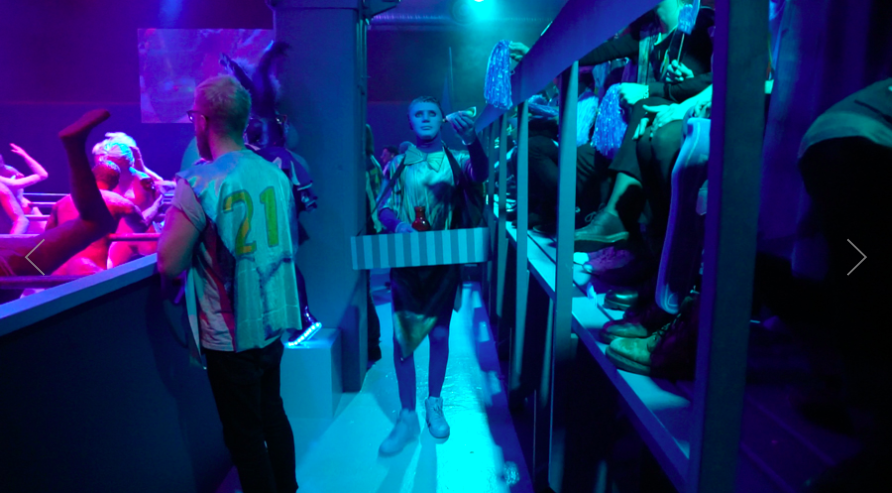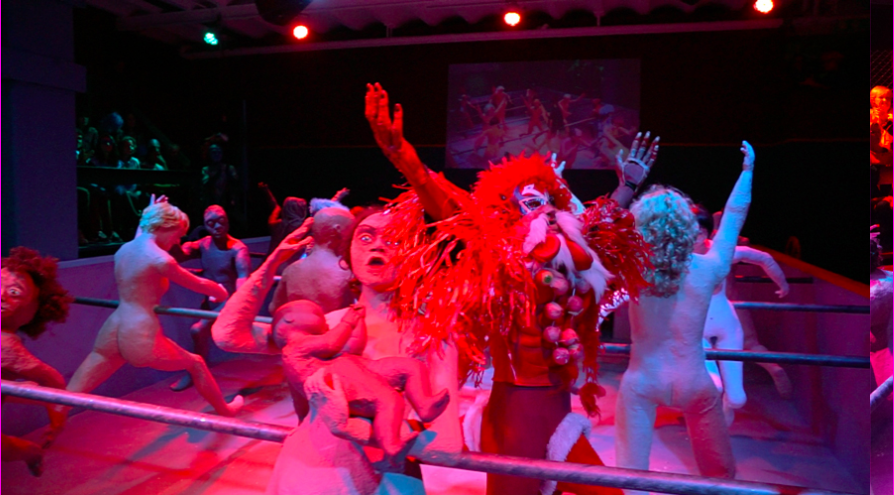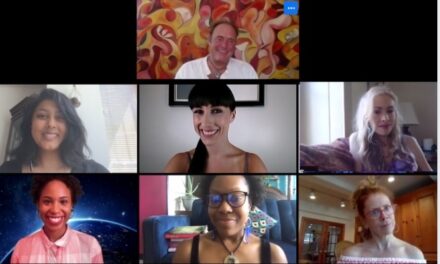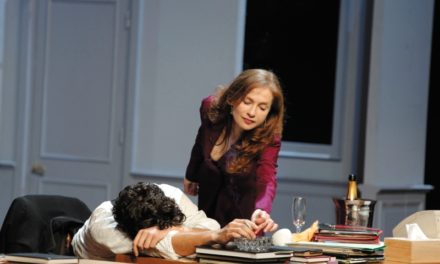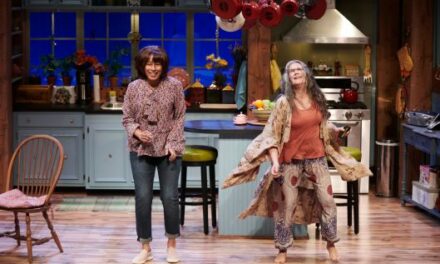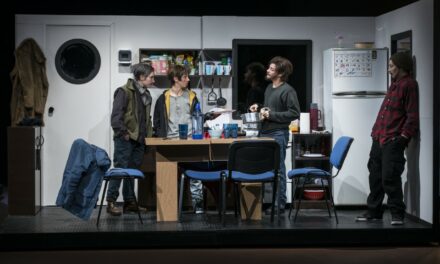Blurring the lines between the grotesque and the beautiful, the cerebral and the corporeal, theatre and sculpture, is Brooklyn based artist Molly Lowe.
Tapping into “the dark, vulnerable, absurdity of being human” Lowe makes work that is both emotionally relatable and stylistically challenging. Her most recent project, Game On, was on exhibition at Lilith Performance Studio in Malmo, Sweden from October 20 to November 18, 2018.
“Multimedia” might be the best word for the type of artist Lowe is. An extensive painter, sculptor, performance artist, and filmmaker, she can’t be locked to one medium. “I’m a true polyamorous artist when it comes to my mediums,” she says. While not a “straight” theatre-maker, there are elements of theatre and qualities of theatricality that permeate her work, especially the most recent Game On. Lowe describes her “installations as sets, my sculptures as props, and my portraits as casts or ensembles. This plays a big part in how I document the work and present them to my audience…” In fact, one might be reminded most of Erwin Piscator and Bertolt Brecht’s “epic theatre” when looking at Lowe’s work. Between the art that each of these artists have made, there is a focus on contemporary issues, the use various (and jarring) artforms to convey a message, and an ultimately the encouragement for audiences to engage in critical thought.
Lowe began to self-identify as an artist at the early age of three. Growing up in the Bay area of California with an industrial designer father and a poet mother, art was always a part of her life. Her father taught her how to build and draw while her mother taught her art history through traveling and by frequenting museums. “Art was a home base and a companion for me wherever I went,” Lowe recalls. This deeply ingrained connection between art and family also appears in Lowe’s film, Redwood (2016). Lowe’s grandmother was a painter who was experiencing Dementia just as Lowe herself was undergoing personal and artistic transitions. Lowe recalls that as her grandmother was “…losing her memory and running out of time… while I was still trying to establish myself as an artist and thinking of becoming a mother. We both had a lot going on and kinda liked to live vicariously through one another– me with her memories and her with my future.” The film weaves family history and personal reflection into a narrative while using Japanese Noh theatre inspired masks and ritualized movements to capture this moment in her life.

“I just try to keep my eyes and ears super open. My gut is like a magnet- sometimes something will just come up in conversation or I’ll witness something in real life and suddenly I’m obsessed with figuring out what it means to me or how I can put a spin on it.”
Lowe’s exploratory quality and use of created human bodies give the audience both the intimacy and distance we need to question ourselves and our relationship to culture, politics, and technology. “My process involves lots of focused, but free, thinking with my eyes closed before I go to bed. Usually getting a special new little sketchbook I can take anywhere for the project and brainstorming lists of goal and desires, and super fast visuals. Getting my hands dirty with a little material experimentation. I learn a lot through the doing, things always come up that I didn’t expect, or that I didn’t understand fully until I gave it time to grow. So I really value the power of experimentation throughout the whole process. I think each piece does have a destiny but I don’t like locking that in too soon.”
Lowe explains that her body of work focuses on the narrative around the “awkwardness of living in a human body and how we struggle to relate physically and emotionally through media and technology.” We see this manifested through her physical installations like giant keyboard buttons, hands contrived to look like human bodies, and the masks in her film that look both beautiful and terrifying with their expressions frozen in either blankness or intense emotion. These ideas and various mediums for expression appear in Game On as well.
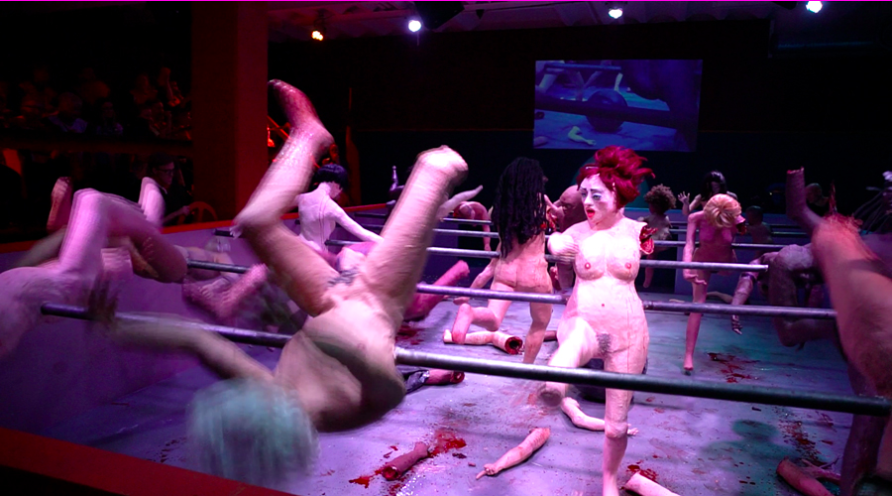
Lowe describes Game On as a: “giant life-sized foosball court made of paper mache pinata people who are filled with blood and guts in the center.” Upon entering the vibrantly lit blue and red space, the audience members are given numbered pinnys. Later, they are chosen, lottery style, to stand up and play the game by spinning a large wheel to move the players. Complete with snacks and a kiss cam, Lowe adds that “it was a highly amped up competitive environment and the audience was encouraged to immerse themselves fully in this psychedelic, sporty space. From operatic halftime shows to shamanistic mascot ceremonies and gory showdowns, it was a surreal nightmare of a game…”
Brecht called for audiences “to see the familiar made strange and the strange familiar.” (Rob Kendt 2001). By re-representing the foosball players with figures that look more vulnerable and more human, Lowe is using people’s bodies and games in a way that is similar to Brecht’s “alienation effect”. The alienation effect was meant to “eliminate any and all sense of total immersion the traditional theater had previously given.” (Annette Roland, 2010).
The effect goes deeper when Lowe integrates video with physical space, similar to what Brecht did with intertitles on stage. Her use of masks and inhuman costuming can also be seen as in alignment with Brecht’s direction that actors become detached from their characters. The mask and costume create a barrier for both the performer and audience just as detached acting did as means for the performance to become “a discussion (about social conditions) with the audience he (the actor) is addressing. He prompts the spectator to justify or abolish these conditions according to what class he belongs to,” (Bertolt Brecht, 1964).
There is also no fourth wall for Lowe’s audience in Game On, just as Brecht would have had it. Allowing for “the spectator to analytically take in the action of the stage.” (Roland, 2010). In her own words, Lowe states that Game On “ultimately asks us to question our own allegiances political or otherwise, and our involvement as spectators in the world today.”
Watch the filmed experience of Game On here.
All photos are from Lilith Performance Studio.
This post was written by the author in their personal capacity.The opinions expressed in this article are the author’s own and do not reflect the view of The Theatre Times, their staff or collaborators.
This post was written by Taylor L. Ciambra.
The views expressed here belong to the author and do not necessarily reflect our views and opinions.

